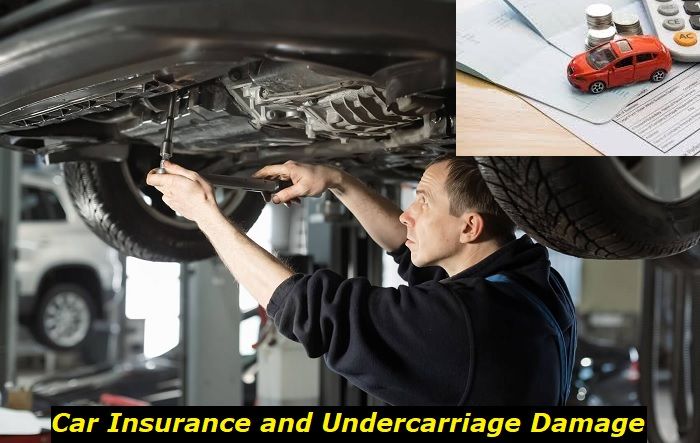Let's talk about the 2009 to 2015 3.5L V6 J35Z4 Honda Pilot engine.
We need to understand how the engine powers the truck-like SUV. The article will cover the engine's specifications, longevity, and problems encountered over the years driving the Honda Pilot 3.5L V6 motor. Hop on the Honda's J35 series wagon and learn more with us.

Key features and my opinion about the engine
- Production years:2009-2014
- Average lifespan of J35Z4:220,000-240,000
- Fuel supply type:port injection
- Power range:250 hp
- Fuel efficiency:average
- Engine block material:aluminum
- Engine reliability score:high
- The most common problems:VCM oil leaks, throttle contamination, injector contamination, engine belt premature failure, no lifters.
Honda Pilot 3.5L V6 Engine Specifications
The 2009-2015 3.5L V6 engine belonged to J35ZA Honda's series engine. Honda equipped the series with a VCM (Variable Cylinder Management). It made it more efficient. Let's take a detailed tour of the engine's specifications.
- Build
The naturally aspirated engine comes with a displacement of 3.5 liters. It measures 89mm bore-wise and 93mm stroke-wise.
It weighs about 550 pounds (250kgs). Honda used aluminum on the engine's block and cylinder head.
- Configuration
The 2009-2015 Honda Pilot 3.5L V6 engine operates on a "Vee" configuration. Essentially, it has an equal number of cylinders on each side. The cylinders are vertically oriented. Hence, the "Vee" configuration.
Since it's a V6 engine, it has six cylinders and four valves per cylinder, making it a 24-valve engine.
The engine exhibits a SOHC (Single Overhead Cam) valve train layout. Its four-valve-per-cylinder setup makes it easier to implement the SOHC valve train layout. The valve train makes the engine a great powerplant.
- Fuel System
The motor uses a multi-point fuel injection (MPFI) system. The MPFI injects fuel into the internal combustion chamber through multiple ports. The ports will work harmoniously to deliver enough fuel to all the cylinders on time.
- Power, Compression, and Transmission
The engine delivers a horsepower level of 250 hp at 5700 RPM (revolutions per minute). Its torque stands at 253 pound-foot at 4800 RPM. Its compression ratio stands at 10.5:1.
The engine comes with two drive modes, forward-wheel drive (FWD) and all-wheel drive (AWD). The motor uses Honda's h5 (5-speed automatic) transmission system.
- Fuel Economy
The 2009- 2015 Honda pilot comes with a 21- gallon fuel tank. The engine lets you cover about 462 miles on a full tank. But this may vary because of the road type, your driving habits, and the engine's fuel economy.
The FWD and AWD have different fuel economy ratings. EPA rates the AWD and FWD 2009-2015 Honda Pilot 3.5L V6 engine's fuel economy as shown in the table below.
|
Engine Type |
City MPG |
Highways MPG |
Combined MPG |
|
2009-2011 FWD |
17 MPG |
23 MPG |
19 MPG |
|
2009-2011 AWD |
16 MPG |
22 MPG |
18 MPG |
|
2012-2015 FWD |
18 MPG |
25 MPG |
20 MPG |
|
2012-2015 AWD |
17 MPG |
24 MPG |
20 MPG |
The 2009-2015 3.5L V6 engine exhibited better fuel economy than the previous generation.
2009-2015 Honda Pilot 3.5L V6 Engine Longevity
The J35Z4 engine can survive 150,000-300,000 with timely maintenance. But reliable reports show that the engine can survive 300,000 miles before requiring a replacement. Over 60 Honda Pilot owners have reported surpassing 300,000 miles, yet the engine is still intact. A few drivers claim to have driven more than a hundred thousand miles without needing extreme changes or part replacements on their power source.
Recommended Maintenance Routine to Attain 150,000-300,000 Miles
Your engine will survive more years or miles if you have an established routine to check, change, or replace worn-out parts. The following routine guideline will give the engine an extended lease of life.
General Maintenance:
- Change the engine oil every 5,000 miles. Also, keep checking the oil and coolant level during every fuel stop. Perform a throttle lubrication every 7,500 miles.
15,000 Miles:
- The 15,000-mile mark is a great time to do a multi-point inspection. Do it every 15,000 miles. Check the fluid levels, brake hoses, lines, suspensions, exhaust system, cooling system, and connections.
- Also, you'll need to renew the engine oil filter every 12 months or 15,000 miles. Whichever comes first.
- Don't forget to assess the rear, front, and parking brakes.
30,000 Miles:
- Replace your engine oil filters and clean the air filters. The spark plugs will also need a swap. You'll need to do it every two years or after every 30,000 miles. You'll need to check the valve clearance after driving 30,000 miles.
- You'll need to assess and adjust the drive belt's tension. The belt will need enough rigidity to ensure the teeth on the belt and gears correspond as expected. Check the brakes. The parking breaks will also require assessment and adjustment.
45,000 Miles:
- You'll need to replace your engine oil filter, brake fluid, and engine coolant. Also, take your time to assess the front and rear brakes. Check whether your parking brakes will need any adjustments.
60,000 Miles:
- Replace the engine coolant, oil filters, air cleaning element, and spark plugs.
- You also need to assess the drive belt's tension and alignment. Adjust it if the tightness is below the required level.
- Check the rear and front brakes. Use a break spanner to adjust them if they need any adjustment. Also, assess and adjust the parking brake.
75,000 Miles:
- You'll have to renew the oil filters. Your coolant will also need a replacement.
- Check all the breaks and adjust your parking brakes.
90,000 Miles:
- The oil filters and air cooling element will require a change. You'll also need to replace the spark plugs, transmission fluid, and brake fluid. Assess the drive belt. Check for any slips or looseness. If you notice any, adjust it. Check the rear and front brakes. Don't forget to assess if the parking brake needs adjustment.
105,000 Miles:
- Do an engine oil replacement. Assess the water pump, breaks, and engine's idle speed. You'll need to replace the coolant and timing belt.
- Evaluate and assess the parking brake. Adjust it if it needs any form of adjustment.
120,000 Miles:
- Change the engine oil, air cleaner element, and spark plugs. Assess the brakes and adjust the driving belt.
Common Problems Linked to 2009-2015 Honda Pilot 3.5L V6 Engine
Generally, the 2009-2015 Honda Pilot 3.5L V6 engine is durable and reliable. However, it has its share of problems. Here are the common faults linked to the engine.
- Excessive Oil Consumption
The engine consumes lots of oil. Mechanics thought the problem was a result of poor driving habits. However, the courts thought otherwise. The court forced Honda to recall the 2009-2013 Honda Pilot over excessive oil consumption issues.
Honda equipped the 2009-2015 Honda Pilot 3.5L V6 engine with VCM technology to improve its fuel economy and emission. However, the VCM causes excessive oil consumption.
Reports have also shown that the oil consumption problem occurs because of a design defect in the engine's piston rings and valve seals. Owners claim to do a refill every 1,000 to 2,000 miles.
Remember, there is no warning light to warn you when your oil level diminishes. Therefore, continually check the oil levels to prevent any oil-related problems.
- Rapid Camshaft Wear
Honda engines exhibit rapid camshaft wear. The 2009-2015 Honda Pilot 3.5LV6 engine is not an exception. Mechanics often blame the lack of maintenance and lobe wear.
However, the problem stems from rapid oil consumption. Low oil levels in the engine often cause camshaft wear.
- Oil Leaks
2009, 2011, 2012, and 2013 Honda Pilot owners have complained of engine oil leaks. Assessments have shown that 80% of the oil leaks are due to component failure within the system. 20% of the leaks occur because of faults in the engine gasket.
- VCM Problems
Aside from excess oil consumption, the VCM also causes unexpected damage to the transmission torque converters and spark plugs. VCM also causes premature wear to the piston rings.
The VCM may also cause power loss or gain and a shifting experience when driving the SUV. Most of the issues affecting the engine stem from the VCM.
- Timing Belt Issues
Although not as common as VCM-related problems, timing belts tend to wear rapidly on the 2009-2015 3.5L V6 engine. There are no notable design flaws with the second-generation engine compared to the current 3.5L V6 engine.
The timing belt becomes a bother once you hit the 100,000-mile mark. Drivers often report engine noises, misfires, and power loss. A check engine illumination may also appear on the dashboard once the timing belt wears off.
We've seen many 2009-2015 Honda Pilot owners despite these issues. Most of them attribute their happiness to the engine. It's efficient, reliable, and can last more than 300,000 miles with proper maintenance.
A Wrap
The J35 2009-2015 Honda pilot 3.5-liter V6 J35Z4 engine is dependable. It delivers outstanding power output without consuming lots of fuel. The engine combined fuel economy ranges from 18 MPG to 20 MPG depending on the engine's drive mode and model. Honda also armed the engine with VCM technology.
Sadly, most of the issues drivers face arise from VCM technology. It causes rapid wear of the engine's components. It also contributes to excessive oil consumption, a notable cause of engine wear. However, the motor can live more than 300,000 miles with proper care and maintenance.
About the authors
The CarAraC research team is composed of seasoned auto mechanics and automotive industry professionals, including individuals with advanced degrees and certifications in their field. Our team members boast prestigious credentials, reflecting their extensive knowledge and skills. These qualifications include: IMI: Institute of the Motor Industry, ASE-Certified Master Automobile Technicians; Coventry University, Graduate of MA in Automotive Journalism; Politecnico di Torino, Italy, MS Automotive Engineering; Ss. Cyril and Methodius University in Skopje, Mechanical University in Skopje; TOC Automotive College; DHA Suffa University, Department of Mechanical Engineering






Add comment